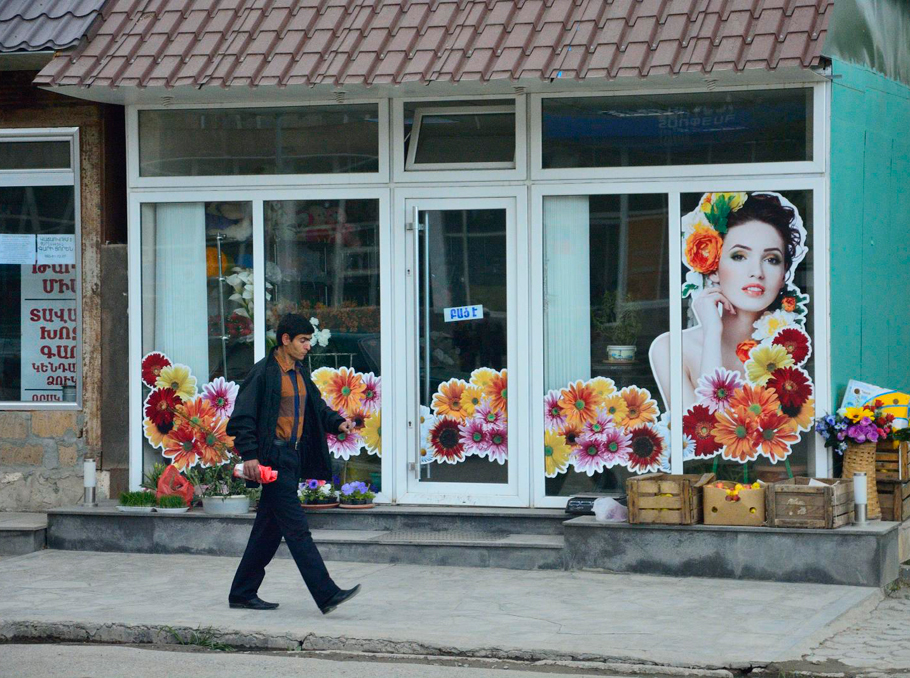Institutional, economic and social reforms aimed at achieving the Millennium Development Goals (MDGs) have been implemented in Armenia for the past 15 years. The Sustainable Development Goals (SDGs) came into force on January 1, 2016.
The progress towards the implementation of the MDGs in Armenia has been summarized in the “Armenia - National Progress Report 2015” which will be made available to the public in the near future.
According to the report, 22 indicators out of 65 were implemented in Armenia by 2015, and 10 of the non-achieved indicators registered positive progress. The country’s commitments and achievements in implementing the MDGs were evaluated not in general terms, but in the context of implementation of Armenia’s national indicators for each goal.
2015 was the closing year for the Millennium Development Agenda. UN member states adopted the 2030 Agenda for Sustainable Development that includes 17 Sustainable Development Goals (SDGs) with a view to encourage the implementation of the SDGs and to ensure continuous and sustainable development efforts in the whole world.
Mediamax summarized the main results and evaluations from the chapter on poverty reduction in the “Armenia - National Progress Report 2015.”
Armenia achieved half of the indicators for reducing extreme poverty and hunger. According to the report, Armenia has made notable progress in reducing poverty in the last two decades in general.
The main driving force of poverty reduction was economic development. Before the global economic crisis, there was an environment conducive for job creation and income generation, which in turn contributed to a decrease in poverty. Social security and support mechanisms, including pensions and family benefits, greatly affected poverty reduction, especially in regard to decreasing the number of malnourished or extremely poor people. Nevertheless, the report states that Armenia was not so effective in the fight against poverty. 2.7% of the population were malnourished in 2013, and 1/3 of the Armenian people lived in poverty.
A recently published report by the Armenian National Statistical Service, the UN World Food Programme (WFP) and the UN Children’s Fund (UNICEF) states that a high number of households in Armenia have serious nutrition problems reflected in large numbers of stunted children.
According to the report, Armenia is exposed to multiple risks, and 28% of households are at risk of becoming food insecure if affected by any shock. Moreover, 19% of children aged under 5 are reported to be stunted. The stunted condition, where children do not grow fully, is caused by chronic malnutrition.
As argued by the authors of the “Armenia - National Progress Report”, two external factors threaten Armenia’s future recovery, negatively affecting the progress in poverty reduction.

Photo: Thomas Leuthard
These factors include the global financial crisis of 2008, as well as the economic sanctions against Armenia’s large economic and trade partner Russia and the resulting economic decline.
The number of poor and extremely poor people grew in 2008-2013. Rising refugee flows in the region, conditioned by the deteriorating geopolitical situation in the region, is another important factor that affected Armenia’s social condition. From the perspective of efforts aimed at poverty reduction, the 17,000 people evacuated from Syria due to the conflict, who applied for asylum in Armenia, became an additional challenge.
Armenia chose targets for ending poverty, the first one being to reduce the poverty level to lower than the 1990 level by 2015.
Almost 1/3 of Armenia’s population (967 thousand citizens) are still considered poor by 2013. Extreme poverty rate was 1.7 times higher than that of 2008. The level of middle class development (e.g. persons earning more that USD 4) in Armenia lags behind the global level.
The poverty gap index also remains very high, although it decreased in recent years. The resources allocated to social assistance are insufficient for covering the poverty gap. International experience suggests that effective targeting is very difficult, which implies that resources significantly larger that 2% of GDP will be required to cover the poverty gap.
Another target for ending poverty was to halve the proportion of people who suffer from hunger between 1990 and 2015.
Children aged 0-5 are especially vulnerable to poverty. Furthermore, households with three or more children are at a higher risk of poverty in Armenia. Despite the general decrease in poverty rate, the rate of children’s poverty rose in 2012 compared to 1.1 % in 2013.
The next target was to achieve full and productive employment and decent work for everyone, including women and young people.
The unemployment rate did not improve but wavered between 16.5 and 19% in 2008-2014. Armenia achieved its MDG target for ensuring jobs for more than half of population of working age. However, the authors consider the situation with people of working age, especially young people, worrying.
Armenia did not achieve the target of ensuring jobs for 70% of youth. The unemployment rate of young people is more than two times higher than the overall unemployment rate (36% compared to 17.6%).
Armenia did not achieve the target of decreasing the number of employed poor people to 5%. One of the worrying signs is the fact that over 1/4 of employed people are still poor, although salaries increased by more than five times in the last decade.
Labor productivity almost doubled in the last decade, but is still quite far from the target of USD 31,000.
Challenges and prospects
The key mid-term challenge for the Government is to mitigate the economic and social impact of external shocks, while continuing political and institutional reforms. In this regard, increasing the economy’s resilience to external shocks and creating new possibilities for development are important priorities.
The fact that the share of malnourished and stunted children aged under 5 has grown since 2000 is a worrying and alarming sign. Children under 5 are among the most deprived and vulnerable group of society, and their issues should become a priority in the fight against poverty. Furthermore, it is important that the right to food becomes a priority in Armenia, and access to food is ensured for all.
Creation of jobs in Armenia has been and will continue to be a challenge. Almost 40% of the country’s labor resources are economically inactive, and 1/3 of young men and women neither receive education, nor are employed. Moreover, Armenia will have to tackle the challenge of increasing economic productivity in order to protect employed people from poverty and give them an opportunity to earn for decent living. Such a challenge can be effectively addressed through a dialogue and cooperation between the public and the private sectors.





























Comments
Dear visitors, You can place your opinion on the material using your Facebook account. Please, be polite and follow our simple rules: you are not allowed to make off - topic comments, place advertisements, use abusive and filthy language. The editorial staff reserves the right to moderate and delete comments in case of breach of the rules.